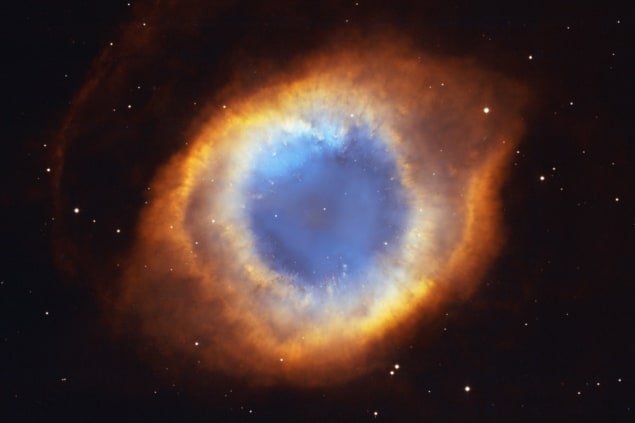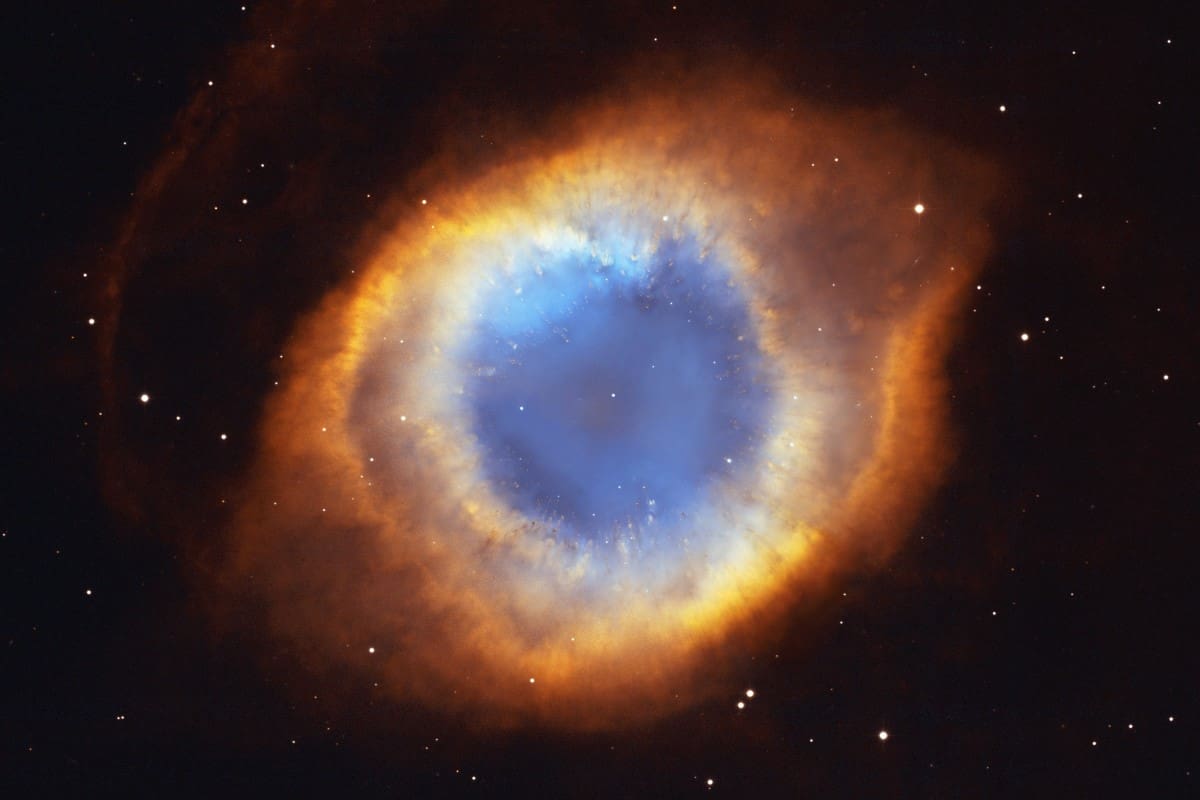
Planetary nebulae as far away as 40 Mpc (about 130 million light–years) have been observed by astronomers for the first time. The objects had been too distant to see until an international team of astronomers used a new filter on data from the Multi-Unit Spectroscopic Explorer (MUSE) instrument – which operates on European Space Agency’s Very Large Telescope (VLT).
The team was led by Martin Roth at the Leibniz Institute for Astrophysics (AIP) in Potsdam, Germany and it applied a differential emission-line filter (DELF) to archival data collected by MUSE. This revealed 15 planetary nebulae that were previously too faint to be seen. The technique could prove to be a useful tool for studying the cosmos and could even help resolve a mystery about the expansion of the universe.
“Planetary nebulae are like Swiss Army Knives for extragalactic study,” says team member Robin Ciardullo at Penn State University in the US. “You can use them to learn about stellar dynamics, dark matter, stellar evolution, galactic chemical evolution, the history of galaxy clusters and, of course, measure extragalactic distances.”
Shedding layers
A planetary nebula occurs at the end of a star’s red giant phase when helium has been exhausted and can no-longer be fused to create carbon and oxygen. At this point, a star that began life at less than 8 solar-masses will shed its outer layers leaving behind a stellar core surrounded by a cloud of material. Eventually, the star will become a white dwarf.
Light emitted by the star will ionize atoms in the cloud, freeing electrons that can then collide with electrons still bound in atoms, kicking them up to higher energy states. When these bound electrons decay to lower energy states they emit light at very specific wavelengths.
“Now that its outside is gone, the star is very hot. The high-energy light from the star slams into the material that just came off the star and lights it up,” explains Ciardullo. “We see what the star ejected into space — the ‘planetary nebula’. It is a terrible name since it has nothing at all to do with planets!”
Standard candles
It is the uniformity of the light emitted by planetary nebulae that make them excellent yardsticks for the measurement of extragalactic distances. Such yardsticks are known as standard candles because they have known luminosities and therefore their distances can be inferred from how bright they appear in the sky.
Along with George Jacoby and Holland Ford, Ciardullo introduced the planetary nebula luminosity function (PNLF) in 1989 and it has been used as a distance indicator for galaxies up to around 15 Mpc ever since.
Using planetary nebulae to look further than about 15 Mpc had not been possible because the luminosity of objects drops as the square of the distance, making more distant objects significantly fainter and therefore harder to observe. Now, however, the application of DELF and the power of MUSE/ VLT has extended this limit considerably allowing precision distance measurements to be made for galaxies up to around 40 Mpc.
Bigger and better
“By the turn of the century, we had explored planetary nebulae in nearby galaxies and had pushed the PNLF distance measurement technique about as far into the universe as we could,” says Ciardullo. “Now telescopes are bigger, and the instrumentation is better. Observations that were extremely difficult 20 years ago are trivial, and we can extend the technique out to much larger distances”

‘Inside out’ nebula points to ‘born again’ star
With this boost, PNLF could help soon help astronomers solve one of cosmology’s most troubling puzzles. This is the apparent mismatch between the local rate of expansion of the universe that astronomers observe using standard candles and the value that is calculated using the lambda-cold-dark-matter (ΛCDM) model of cosmology. Dubbed the Hubble Tension, resolving this discrepancy could point to new physics beyond the ΛCDM.
The idea is to use planetary nebulae as a complementary distance measurement to other standard candles.
“One way to address [the Hubble tension] is to double-check the local measurements with other precision ways of measuring distances,” explains Ciardullo. “Until now, planetary nebulae were not bright enough to observe deep enough into the universe to test this tension. Our [research] shows that with MUSE and the VLT, we can get to these necessary distances.”
The observations are described the Astrophysical Journal.
